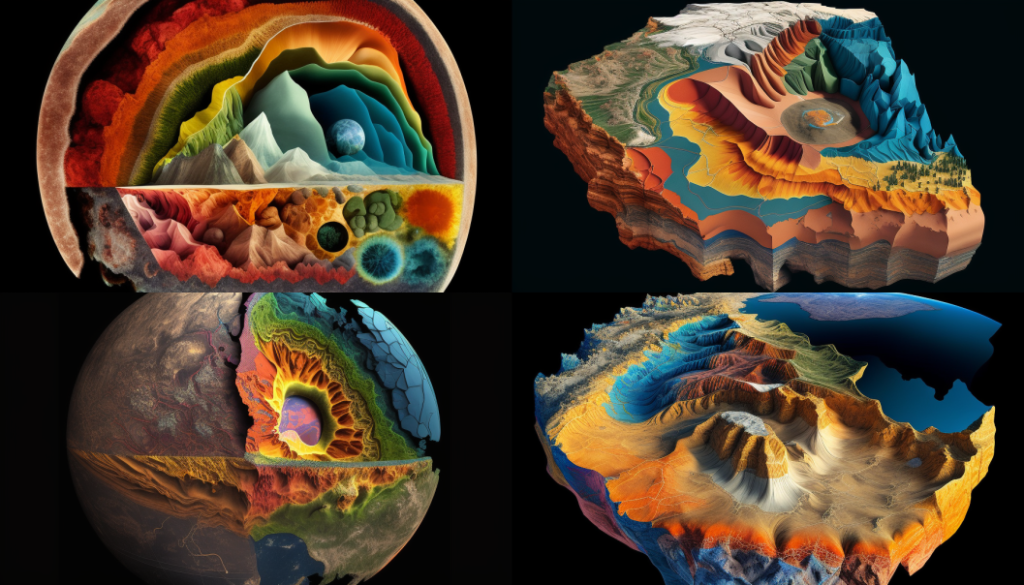Universe Knowledge – Discovering the Mysteries of the Universe: A Comprehensive Guide Through 20 Key Areas, Key Knowledge
Table of Contents
- Universe Knowledge – Discovering the Mysteries of the Universe: A Comprehensive Guide Through 20 Key Areas, Key Knowledge
-
- 1. Astronomy – Universe Knowledge, Mysteries of the Universe, Key Knowledge
- 2. Astrophysics – Universe Knowledge, Mysteries of the Universe, Key Knowledge
- 3. Cosmology – Universe Knowledge, Mysteries of the Universe, Key Knowledge
- 4. General Relativity – Universe Knowledge, Mysteries of the Universe, Key Knowledge
- 5. Quantum Mechanics
- 6. Particle Physics
- 7. Thermodynamics
- 8. Electromagnetism
- 9. Optics
- 10. Nuclear Physics
- 11. Solid State Physics
- 12. Fluid Mechanics
- 13. Chemical Physics
- 14. Biophysics
- 15. Astrophysics – Universe Knowledge, Mysteries of the Universe, Key Knowledge
- 16. Materials Science
- 17. Geology
- 18. Oceanography
- 19. Meteorology
- 20. Environmental Science
- In conclusion,
-
The universe is vast and complex, and to understand it, one needs to have a broad base of knowledge in various fields. From the behavior of light and matter to the structure and evolution of the Earth and its atmosphere, there are many areas of knowledge that are essential for gaining a comprehensive understanding of the universe.
In this list, we’ve compiled 20 areas of knowledge that are essential for a deep understanding of the universe. These areas of knowledge range from physics and chemistry to geology and environmental science, and each provides important insights into the workings of the universe and the interactions between its various components.
By studying these areas of knowledge, one can gain a more complete and interconnected understanding of the universe and the complex systems that govern it.
1. Astronomy – Universe Knowledge, Mysteries of the Universe, Key Knowledge

- Explanation: Astronomy is the scientific study of celestial objects and phenomena, including stars, planets, galaxies, and other objects in space.
- Observations: Astronomers use telescopes, satellites, and other instruments to observe and collect data on these objects, and then use this data to learn more about their properties, origins, and evolution.
- Key Questions: Some of the key questions that astronomers study include the formation and evolution of stars and galaxies, the structure and composition of planetary systems, and the search for extraterrestrial life.
- Study of Extreme Environments: Astronomers also study the behavior of objects in extreme environments, such as black holes and neutron stars, and the interactions between objects in space, such as the collision of galaxies.
- Importance: Astronomy provides important information about the universe and our place within it, and advances in this field have led to many important technological innovations, such as telescopes and satellites.
2. Astrophysics – Universe Knowledge, Mysteries of the Universe, Key Knowledge

- Explanation: Astrophysics is a branch of physics that applies the principles of physics to the study of astronomical objects and phenomena.
- Study of Physical Properties: Astrophysicists use the laws of physics to understand the physical and chemical properties of objects in space, such as stars and galaxies, and to explain their behavior.
- Key Questions: Some of the key questions that astrophysicists study include the formation and evolution of stars and galaxies, the behavior of matter in extreme environments, such as black holes, and the interactions between objects in space.
- Study of Dark Matter and Dark Energy: Astrophysicists also study the properties of dark matter and dark energy and their role in the evolution of the universe.
- Importance: Advances in astrophysics have led to a deeper understanding of the universe and have important implications for fields such as cosmology and particle physics.
3. Cosmology – Universe Knowledge, Mysteries of the Universe, Key Knowledge

- Explanation: Cosmology is the study of the origin, evolution, and structure of the universe as a whole.
- Use of Data: Cosmologists use data from astronomy, physics, and other fields to develop models and theories that describe the history and future of the universe and its contents.
- Key Questions: Some of the key questions that cosmologists study include the formation and evolution of the universe, the nature of dark matter and dark energy, and the ultimate fate of the universe.
- Study of the Early Universe: Cosmology also provides important insights into the early universe and the conditions that gave rise to the formation of galaxies, stars, and planets.
- Importance: Advances in cosmology have led to a deeper understanding of the universe and have important implications for fields such as astronomy, physics, and philosophy.
4. General Relativity – Universe Knowledge, Mysteries of the Universe, Key Knowledge

- Explanation: General relativity is a theory of gravitation developed by Albert Einstein that describes the behavior of objects in space and time.
- Explanation of Gravity: This theory explains how gravity works and predicts the behavior of objects in strong gravitational fields, such as those around black holes.
- Confirmation and Significance: General relativity has been confirmed by numerous experiments and observations and has become a cornerstone of modern physics.
- Implications for Other Fields: The theory has important implications for fields such as astronomy, cosmology, and particle physics and has been incorporated into the study of many astronomical objects and phenomena.
- Continued Study: General relativity continues to be an active area of research, and new observations and experiments are providing new insights into the nature of gravity and the behavior of objects in strong gravitational fields.
5. Quantum Mechanics

- Explanation: Quantum mechanics is a branch of physics that describes the behavior of particles on a very small scale, such as atoms and subatomic particles.
- Understanding Counterintuitive Behavior: This field helps us understand the strange and counterintuitive behavior of particles on this scale, such as the principles of superposition and entanglement.
- Importance for Material Properties: Quantum mechanics is essential for understanding the properties of materials and how they interact with light and other forms of energy.
- Wide Applications: The principles of quantum mechanics have been confirmed by numerous experiments and are widely used in fields such as electronics, cryptography, and medicine.
- Ongoing Research: Quantum mechanics continues to be an active area of research, and new discoveries and innovations in this field have important implications for many areas of science and technology.
6. Particle Physics

- Explanation: Particle physics is the study of the smallest building blocks of matter, including subatomic particles such as quarks, leptons, and bosons.
- Study of Particle Interactions: Particle physicists study the interactions between these particles and the forces that govern their behavior, such as the strong and weak nuclear forces.
- Key Questions: Some of the key questions that particle physicists study include the nature of dark matter and dark energy, the unification of the fundamental forces, and the search for new particles and phenomena.
- Use of Particle Accelerators: Particle physicists use particle accelerators and detectors to study the behavior of particles at high energies and to search for new particles and phenomena.
- Importance: Advances in particle physics have led to a deeper understanding of the universe and its contents and have important implications for fields such as cosmology, astronomy, and engineering.
7. Thermodynamics

- Explanation: Thermodynamics is the study of heat and temperature and their relationship to energy and work.
- Study of Heat Transfer: Thermodynamics helps us understand how heat is transferred from one object to another and how this transfer affects the properties of materials and systems.
- Key Laws: The field of thermodynamics is characterized by several important laws, such as the first law of thermodynamics, which states that energy can be neither created nor destroyed, only transformed from one form to another.
- Applications in Engineering: Thermodynamics has important applications in fields such as engineering, where it is used to design and optimize systems that use heat, such as engines and power plants.
- Importance: Advances in thermodynamics have led to a deeper understanding of energy and heat and have important implications for fields such as physics, chemistry, and materials science.
8. Electromagnetism

- Explanation: Electromagnetism is the study of the interaction between electric and magnetic fields and the behavior of charged particles.
- Study of Interactions: Electromagnetism helps us understand how electric and magnetic fields interact with each other and with charged particles, such as electrons and ions.
- Key Equations: The field of electromagnetism is described by a set of equations known as Maxwell’s equations, which describe the behavior of electric and magnetic fields and their interactions.
- Applications in Technology: Electromagnetism has important applications in fields such as electronics, where it is used to design and optimize systems that use electric and magnetic fields, such as circuits and electromagnetic devices.
- Importance: Advances in electromagnetism have led to a deeper understanding of the behavior of charged particles and have important implications for fields such as physics, engineering, and materials science.
9. Optics

- Explanation: Optics is the study of light and its interactions with matter.
- Study of Light Propagation: Optics helps us understand how light propagates through different materials and how it is affected by its interactions with matter, such as reflection, refraction, and absorption.
- Key Principles: The field of optics is characterized by several important principles, such as Snell’s law, which describes the behavior of light as it passes from one material to another, and the wave-particle duality of light.
- Applications in Technology: Optics has important applications in fields such as imaging, where it is used to design and optimize systems that use light to capture images, such as cameras and microscopes.
- Importance: Advances in optics have led to a deeper understanding of light and its interactions with matter and have important implications for fields such as physics, engineering, and medicine.
10. Nuclear Physics

- Explanation: Nuclear physics is the study of the structure and behavior of atomic nuclei and their interactions with other particles.
- Study of Nuclear Reactions: Nuclear physicists study the interactions between atomic nuclei and other particles, such as electrons and photons, and the behavior of these interactions, such as radioactive decay and nuclear reactions.
- Key Questions: Some of the key questions that nuclear physicists study include the properties of nuclei and their interactions, the origin of elements in the universe, and the behavior of matter in extreme environments, such as the cores of stars.
- Use of Particle Accelerators: Nuclear physicists use particle accelerators and detectors to study the behavior of atomic nuclei and their interactions with other particles.
- Importance: Advances in nuclear physics have led to a deeper understanding of the structure and behavior of atomic nuclei and have important implications for fields such as physics, astronomy, and medicine.
11. Solid State Physics

- Explanation: Solid state physics is the study of the properties and behavior of solid materials, including their electronic, optical, and mechanical properties.
- Study of Material Properties: Solid state physicists study the properties of materials, such as their structure, composition, and behavior, and how these properties are affected by external conditions, such as temperature and pressure.
- Key Questions: Some of the key questions that solid state physicists study include the behavior of electrons in solids, the properties of materials at the nanoscale, and the behavior of materials in extreme environments, such as high temperatures and pressures.
- Applications in Technology: Solid state physics has important applications in fields such as electronics, where it is used to design and optimize devices that use solid materials, such as transistors and solar cells.
- Importance: Advances in solid state physics have led to a deeper understanding of the properties and behavior of solid materials and have important implications for fields such as physics, engineering, and materials science.
12. Fluid Mechanics

- Explanation: Fluid mechanics is the study of the behavior of fluids, including liquids and gases, and how they respond to external forces and conditions.
- Study of Flow: Fluid mechanics helps us understand how fluids flow and how they are affected by external conditions, such as temperature, pressure, and geometry.
- Key Questions: Some of the key questions that fluid mechanics study include the behavior of fluids in flow, the dynamics of turbulence, and the behavior of fluids in extreme environments, such as high temperatures and pressures.
- Applications in Engineering: Fluid mechanics has important applications in fields such as engineering, where it is used to design and optimize systems that use fluids, such as pumps, turbines, and aerodynamics.
- Importance: Advances in fluid mechanics have led to a deeper understanding of the behavior of fluids and have important implications for fields such as physics, engineering, and materials science.
13. Chemical Physics

- Explanation: Chemical physics is the study of the interactions between particles, such as atoms and molecules, and the behavior of these interactions, such as chemical reactions.
- Study of Chemical Reactions: Chemical physicists study the behavior of chemical reactions and the underlying physical principles that govern these reactions, such as thermodynamics and kinetics.
- Key Questions: Some of the key questions that chemical physicists study include the behavior of particles in chemical reactions, the properties of materials at the nanoscale, and the behavior of materials in extreme environments, such as high temperatures and pressures.
- Applications in Chemistry: Chemical physics has important applications in fields such as chemistry, where it is used to understand and control chemical reactions and the behavior of chemical systems.
- Importance: Advances in chemical physics have led to a deeper understanding of the interactions between particles and have important implications for fields such as physics, chemistry, and materials science.
14. Biophysics

- Explanation: Biophysics is the study of the physical principles that govern the behavior of biological systems, including cells, tissues, and organisms.
- Study of Biological Systems: Biophysicists study the behavior of biological systems and the underlying physical principles that govern these systems, such as thermodynamics, kinetics, and electromagnetism.
- Key Questions: Some of the key questions that biophysicists study include the behavior of biological systems at the molecular and cellular levels, the properties of biological materials, and the behavior of biological systems in response to external conditions, such as temperature and pressure.
- Applications in Biology: Biophysics has important applications in fields such as biology, where it is used to understand and control biological systems and the behavior of biological materials.
- Importance: Advances in biophysics have led to a deeper understanding of the behavior of biological systems and have important implications for fields such as biology, medicine, and materials science.
15. Astrophysics – Universe Knowledge, Mysteries of the Universe, Key Knowledge

- Explanation: Astrophysics is the study of the physical properties and behavior of objects and phenomena in the universe, including stars, galaxies, and black holes.
- Study of Cosmic Objects and Phenomena: Astrophysicists study the behavior of cosmic objects and phenomena and the underlying physical principles that govern these objects and phenomena, such as gravity, electromagnetism, and thermodynamics.
- Key Questions: Some of the key questions that astrophysicists study include the formation and evolution of stars and galaxies, the nature of dark matter and dark energy, and the origin and evolution of the universe.
- Use of Observational Techniques: Astrophysicists use a variety of observational techniques, such as telescopes and satellites, to study the behavior of cosmic objects and phenomena.
- Importance: Advances in astrophysics have led to a deeper understanding of the universe and its contents and have important implications for fields such as astronomy, physics, and cosmology.
16. Materials Science

- Explanation: Materials science is the study of the properties and behavior of materials, including metals, ceramics, polymers, and composites.
- Study of Material Properties: Materials scientists study the properties of materials, such as their structure, composition, and behavior, and how these properties are affected by external conditions, such as temperature and pressure.
- Key Questions: Some of the key questions that materials scientists study include the behavior of materials at the nanoscale, the properties of materials in extreme environments, and the design and synthesis of new materials.
- Applications in Engineering: Materials science has important applications in fields such as engineering, where it is used to design and optimize materials for specific applications, such as aerospace and biomedical engineering.
- Importance: Advances in materials science have led to a deeper understanding of the properties and behavior of materials and have important implications for fields such as physics, engineering, and materials science.
17. Geology

- Explanation: Geology is the study of the Earth, including its structure, composition, and processes, and the history of its development over time.
- Study of Earth Processes: Geologists study the processes that shape the Earth, such as plate tectonics, volcanic activity, and erosion, and how these processes have affected the Earth’s surface over time.
- Key Questions: Some of the key questions that geologists study include the formation and evolution of the Earth, the behavior of geological processes, and the distribution of geological resources, such as minerals and energy.
- Use of Field and Laboratory Techniques: Geologists use a combination of field and laboratory techniques, such as mapping, drilling, and geochemical analysis, to study the Earth and its processes.
- Importance: Advances in geology have led to a deeper understanding of the Earth and its processes and have important implications for fields such as earth science, environmental science, and engineering.
18. Oceanography

- Explanation: Oceanography is the study of the ocean, including its structure, composition, and processes, and the interactions between the ocean and other components of the Earth system.
- Study of Ocean Processes: Oceanographers study the processes that shape the ocean, such as circulation, tides, and waves, and how these processes interact with the Earth’s atmosphere, land, and biosphere.
- Key Questions: Some of the key questions that oceanographers study include the behavior of ocean processes, the distribution of ocean resources, such as seafood and energy, and the impact of human activities on the ocean and its processes.
- Use of Field and Laboratory Techniques: Oceanographers use a combination of field and laboratory techniques, such as ocean-going research vessels, remotely operated vehicles, and ocean-bottom seismographs, to study the ocean and its processes.
- Importance: Advances in oceanography have led to a deeper understanding of the ocean and its processes and have important implications for fields such as earth science, environmental science, and engineering.
19. Meteorology

- Explanation: Meteorology is the study of the Earth’s atmosphere, including its structure, composition, and processes, and the behavior of the weather and climate.
- Study of Weather and Climate: Meteorologists study the behavior of the Earth’s atmosphere, including the formation and evolution of weather systems, such as clouds and storms, and the behavior of climate over time.
- Key Questions: Some of the key questions that meteorologists study include the behavior of weather systems, the impact of human activities on the atmosphere and climate, and the prediction of weather and climate events.
- Use of Observational Techniques: Meteorologists use a variety of observational techniques, such as satellites, weather balloons, and ground-based instrument networks, to study the Earth’s atmosphere and its behavior.
- Importance: Advances in meteorology have led to a deeper understanding of the Earth’s atmosphere and its behavior and have important implications for fields such as earth science, environmental science, and engineering.
20. Environmental Science

- Explanation: Environmental science is the study of the interactions between the Earth’s physical and biological systems, including the atmosphere, oceans, and land, and the impact of human activities on these systems.
- Study of Earth Systems: Environmental scientists study the interactions between the Earth’s physical and biological systems and how these interactions are affected by human activities, such as pollution and climate change.
- Key Questions: Some of the key questions that environmental scientists study include the behavior of Earth systems, the impact of human activities on these systems, and the development of strategies for sustainable use and management of natural resources.
- Use of Interdisciplinary Approaches: Environmental science is an interdisciplinary field, and environmental scientists often use a combination of approaches from fields such as physics, biology, and chemistry to study the Earth and its systems.
- Importance: Advances in environmental science have led to a deeper understanding of the Earth and its systems and have important implications for fields such as earth science, environmental science, and engineering.
In conclusion,
these 20 areas of knowledge provide a comprehensive understanding of the universe and its workings. By studying these areas, one can gain insights into the behavior of light and matter, the structure and evolution of the Earth and its atmosphere, and the interactions between various components of the universe.
Tags:
universe, knowledge, physics, chemistry, biology, geology, meteorology, environmental science, astronomy, astrophysics
Keywords:
cosmos, natural systems, scientific disciplines, interdisciplinary approaches, understanding the universe
Here are 10 useful links related to the universe:
- NASA’s website (https://www.nasa.gov)
- European Space Agency’s website (https://www.esa.int)
- Hubble Space Telescope’s website (https://www.spacetelescope.org)
- International Astronomical Union’s website (https://www.iau.org)
- American Astronomical Society’s website (https://aas.org)
- American Geophysical Union’s website (https://www.agu.org)
- National Oceanic and Atmospheric Administration’s website (https://www.noaa.gov)
- Royal Astronomical Society’s website (https://ras.ac.uk)
- European Southern Observatory’s website (https://www.eso.org)
- The Planetary Society’s website (https://www.planetary.org)
Table of Contents
- Universe Knowledge – Discovering the Mysteries of the Universe: A Comprehensive Guide Through 20 Key Areas, Key Knowledge
-
- 1. Astronomy – Universe Knowledge, Mysteries of the Universe, Key Knowledge
- 2. Astrophysics – Universe Knowledge, Mysteries of the Universe, Key Knowledge
- 3. Cosmology – Universe Knowledge, Mysteries of the Universe, Key Knowledge
- 4. General Relativity – Universe Knowledge, Mysteries of the Universe, Key Knowledge
- 5. Quantum Mechanics
- 6. Particle Physics
- 7. Thermodynamics
- 8. Electromagnetism
- 9. Optics
- 10. Nuclear Physics
- 11. Solid State Physics
- 12. Fluid Mechanics
- 13. Chemical Physics
- 14. Biophysics
- 15. Astrophysics – Universe Knowledge, Mysteries of the Universe, Key Knowledge
- 16. Materials Science
- 17. Geology
- 18. Oceanography
- 19. Meteorology
- 20. Environmental Science
- In conclusion,
-
1) 유튜브 채널 – 10,500 구독자와 함께하는 유튜버 [ 큐레이터 단비 ]
– 유튜브 채널 ‘내’가 있는 유튜브와 블로그로 이루는 퍼스널 브랜딩 채널
2) 네이버 카페 커뮤니티
– [ 큐레이터 단비 – 퍼스널 브랜딩 커뮤니티 유튜브 온라인 수익화 방법 및 노하우 공유 ]
3) 본 블로그의 다른 글 보기
액션캠 악세사리 추천 – DJI 오즈모 액션4 추천








![[SUB] Vietnam Emerging Market -Vietnam’s Emergence as an Emerging Market (97470000 People) [SUB] Vietnam Emerging Market -Vietnam's Emergence as an Emerging Market (97470000 People)](https://min-inter.co.kr/wp-content/uploads/2023/03/020-Vietnams-Emergence-as-an-Emerging-Market-356x220.jpg)
![[SUB] North Korea’s Economic Crisis: Impact on Its Citizens (26160000 People) [SUB] North Korea's Economic Crisis: Impact on Its Citizens (26160000 People)](https://min-inter.co.kr/wp-content/uploads/2023/03/019-Why-does-North-Korea-turn-a-blind-eye-to-the-market-economy-and-stick-to-its-policy-of-closure-356x220.jpg)






![[KOREAN ISSUE] The latest Korean issue within a month Keyword. (Translated and readable.) 2022](https://min-inter.co.kr/wp-content/uploads/2022/01/20220122-KOREAN_ISSUE-LATEST_NEW_KEYWORD-324x235.jpg)
![[Best Readability Free font recommendation] KodiUD Ongodic Universal Design Font only 1. Example Usages](https://min-inter.co.kr/wp-content/uploads/2022/01/20220117-가독성좋은무료폰트추천-KoddiUD온고딕-유니버설-디자인-서체-딱1가지-324x235.jpg)
![[SUB] North Korea’s Economic Crisis: Impact on Its Citizens (26160000 People) [SUB] North Korea's Economic Crisis: Impact on Its Citizens (26160000 People)](https://min-inter.co.kr/wp-content/uploads/2023/03/019-Why-does-North-Korea-turn-a-blind-eye-to-the-market-economy-and-stick-to-its-policy-of-closure-324x235.jpg)


